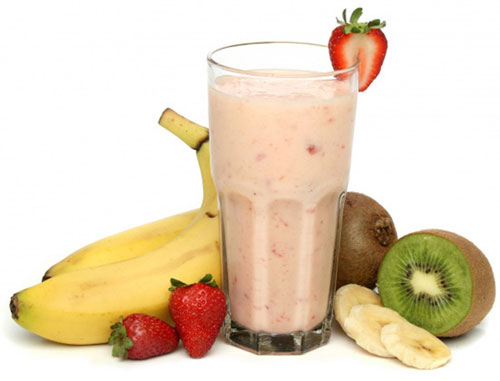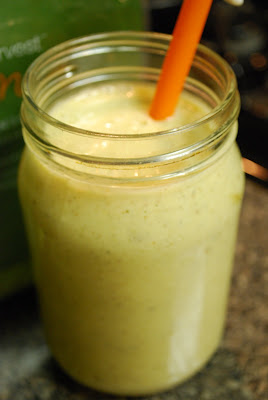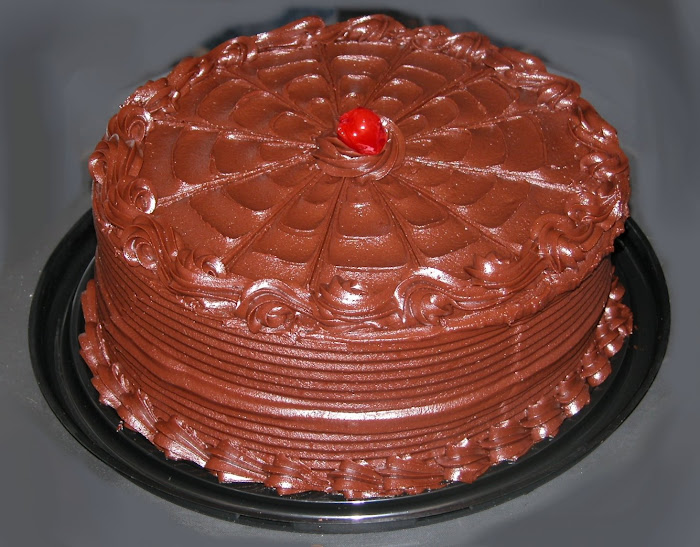 Hemp The Food of The Future! Lot's Of Uses! Food, Soap, Shampoo, Cloth, Shoes, houses and many many more!
Hemp The Food of The Future! Lot's Of Uses! Food, Soap, Shampoo, Cloth, Shoes, houses and many many more!HEALTH FACTS
*If one tried to ingest enough industrial hemp to get 'a buzz', it would be the equivalent of taking 2-3 doses of a high-fiber laxative.
*At a volume level of 81%, hemp oil is the richest known source of polyunsaturated essential fatty acids (the "good" fats). It's quite high in some essential amino acids, including gamma linoleic acid (GLA), a very rare nutrient also found in mother's milk.
*While the original "gruel" was made of hemp seed meal, hemp oil and seed can be made into tasty and nutritional products.
HISTORY FACTS
*Hemp has been grown for at least the last 12,000 years for fiber (textiles and paper) and food. It has been effectively prohibited in the United States since the 1950s.
*George Washington and Thomas Jefferson both grew hemp. Ben Franklin owned a mill that made hemp paper. Jefferson drafted the Declaration of Independence on hemp paper.
*When US sources of "Manila hemp" (not true hemp) was cut off by the Japanese in WWII, the US Army and US Department of Agriculture promoted the "Hemp for Victory" campaign to grow hemp in the US.
*Because of its importance for sails (the word "canvass" is rooted in "cannabis") and rope for ships, hemp was a required crop in the American colonies.
INDUSTRY FACTS
*Henry Ford experimented with hemp to build car bodies. He wanted to build and fuel cars from farm products.
*BMW is experimenting with hemp materials in automobiles as part of an effort to make cars more recyclable.
*Much of the bird seed sold in the US has hemp seed (it's sterilized before importation), the hulls of which contain about 25% protein.
*Hemp oil once greased machines. Most paints, resins, shellacs, and varnishes used to be made out of linseed (from flax) and hemp oils.
*Rudolph Diesel designed his engine to run on hemp oil.
*Kimberly Clark (on the Fortune 500) has a mill in France which produces hemp paper preferred for bibles because it lasts a very long time and doesn't yellow.
*Construction products such as medium density fiber board, oriented strand board, and even beams, studs and posts could be made out of hemp. Because of hemp's long fibers, the products will be stronger and/or lighter than those made from wood.
*The products that can be made from hemp number over 25,000.

The manifold uses of hemp - hemp adidas


Nutritional Profile and Benefits of Hemp Seed, Nut and Oil
 Hemp foods are expanding onto the shelves of grocery and natural food stores across North America. By definition, these are foods containing whole hemp seeds or the oil, nut (hulled seed) and/or flour (ground seed cake) derived from the seeds.
Hemp foods are expanding onto the shelves of grocery and natural food stores across North America. By definition, these are foods containing whole hemp seeds or the oil, nut (hulled seed) and/or flour (ground seed cake) derived from the seeds. Examples of currently available hemp food products include salad dressings, nutrition bars, breads, cookies, granola, waffles, nut butter, chips, pasta, frozen deserts and cold-pressed oil supplements.
Examples of currently available hemp food products include salad dressings, nutrition bars, breads, cookies, granola, waffles, nut butter, chips, pasta, frozen deserts and cold-pressed oil supplements.
These products are sold for much more than their "hemp cachet"alone; manufacturers promote hemp foods for their exceptional nutritional and taste benefits. Examining the composition of hemp seed will help explain these benefits.
Like other oil seeds, the hemp nut consists mainly of oil (typically 44%), protein (33%) and dietary fiber and other carbohydrates (12%, predominantly from residues of the hull). In addition, the nut contains vitamins (particularly the tocopherols and tocotrienols of the Vitamin E complex), phytosterols and trace minerals. Overall, hemp's main nutritional advantage over other seeds lies in the composition of its oil, i.e. its fatty acid profile, and in its protein which contains all of the essential amino acids in nutritionally significant amounts and in a desirable ratio.
Most oil seeds contain plenty of linoleic acid (LA), an essential fatty acid (EFA) from the "omega-6" family, yet they offer little alpha-linolenic acid (ALA), the other EFA from the "omega-3" family. Health agencies around the world agree that humans should ingest these EFAs in an omega-6/omega-3 ratio of about 4:1. Since common seed oil and animal fat, both low in omega-3, account for most of our fat intake, Western diets typically have omega-6/omega-3 ratios of 10:1 or more, which is far too rich in omega-6 and correspondingly too deficient in omega-3. Recent clinical research continues to identify this imbalance as a co-factor in a wide range of common illnesses, including cardiovascular diseases, arthritis, diabetes, skin and mood disorders.
A 1999 workshop by the U.S. National Institute of Health (see http://ods.od.nih.gov/ news/conferences/w6w3_abstracts.html) demonstrated the impressive benefits of a balanced omega-6/omega-3 ratio in our diet: reduced risk of atherosclerosis,sudden cardiac death and certain types of cancers, decrease in the symptoms of rheumatoid arthritis, mood improvement in bipolar disorders and optimized development in infants.
In clinical studies, these benefits are often achieved using omega-3-rich fish and flax oil supplements.
A more "holistic"approach consists of shifting our general dietary fat intake towards nuts and oils offering a better omega-6/omega-3 ratio. Hemp nut and oil offer an omega- 6/omega-3 ratio of 3:1 or less, depending on plant variety.
This exceeds the target ratio of 4:1 and compensates in part for omega-3 deficiencies in the rest of our diet. No other vegetable oil offers EFAs at such high concentrations and, more importantly, in such a desirable omega-6/omega-3 ratio.
 Hemp oil also provides significant amounts of the more rare 'super' polyunsaturated fatty acids, notably gamma-linolenic acid (GLA) and stearidonic acid (SDA). These are not essential themselves, but our body only naturally produces them from the LA and ALA essential fatty acids,respectively.
Hemp oil also provides significant amounts of the more rare 'super' polyunsaturated fatty acids, notably gamma-linolenic acid (GLA) and stearidonic acid (SDA). These are not essential themselves, but our body only naturally produces them from the LA and ALA essential fatty acids,respectively.
Supplementation with GLA and SDA appears to alleviate the symptoms of atopic dermatitis and other skin diseases in some patients. Clinical trials of the putative benefits from ingested hemp oil are currently under way at the University of Kuopio in Finland to assess the extent of these potential benefits. GLA and SDA content in hemp seed vary considerably with variety and this needs to be considered when using hemp oil to treat such symptoms.
Hemp oil typically contains less than 10% saturated fatty acids, and no trans-fatty acids, which are particularly detrimental to our blood cholesterol balance.
To avoid conversion of polyunsaturated fatty acids to unhealthy peroxides at higher temperatures, hemp oil and nut are best used for cold and warm dishes
where temperature is kept below the boiling point(212° F). Hemp oil should
not be used for frying. When using it for light sautéing, keeping the panat low heat and with sufficient moisture in the bottom limits both temperature and the formation of peroxides and off-flavors.

Hemp nut can be lightly toasted and baked in bread and pastry dough keeping in mind these temperature and moisture caveats.
Hemp protein is also of exceptionally high quality in terms of amino acid (AA) composition and protein structure, the latter affecting digestibility and utilization by the human body.
Hemp protein contains all of the essential amino acids in more nutritionally significant amounts and at a ratio closer to "complete" sources of protein (like meat, milk and eggs) than all other oil seeds except soy. Hemp protein consists of two globular proteins, albumin (33%) and edestine (67%), with a structure very similar to proteins manufactured in our blood and is thus readily digestible.
Hemp protein appears to be free of anti nutrients that are found in soy to interfere with protein
uptake. So, eating hemp seed or nuts delivers protein with a favorable AA composition and in a structure readily utilized.
Hemp's nutritional advantage over other sources of fats and protein thus lies in its highly desirable balance of basic nutrients. Simply put, when eating hemp seed, nut and/or oil, our
body obtains much of what it needs without the caloric ballast
of non-essential nutrients.
Yet, unlike fish and flax oil supplements and assorted protein powders, properly processed hemp seed offers these benefits with the additional bonus of a nice flavor profile - hemp tastes good.
Fresh cold pressed hemp oil and hemp nut, particularly when toasted, add a nice nutty flavor to many dishes and packaged food products.
Hemp nut and oil therefore are attractive both nutritionally and culinary, rendering them truly modern food sources.
BENEFITS
-
People interested in preventative health and wellness
-
Diabetics
-
People with obesity
-
People with chronic constipation Elderly individuals with chronic health problems
-
People with high blood pressure
-
Individuals on carb-reduced diets
-
Individuals battling high cholesterol
-
People with Celiac Disease
-
People battling depression
-
Pregnant and lactating mothers
-
Children with hyperactivity disorders
- stimulates growth of hair and nails.
- improves health of skin.
- reduces inflammation.
- carries toxins to the surface of the skin, the intestinal tract, kidneys and lungs where they can be expelled.
- used in the treatment of glandular atrophy, gallstones, kidney degeneration, acne, and menstrual irregularity.
- reduces blood serum cholesterol levels.
- lowers blood pressure.
- helps to reduce fever.
LEARN More facts about Hemp !!
Hemp (Cannabis sativa L.) is one of the few species of the plant kingdom, that was recognize for its numerous virtues thousands of years ago and thus has been cultivated ever since then. Hemp originates from Central Asia but has made its way through mankind into all different climatic areas of the globe: from zones with little sun and short cultivation periods to subtropical-tropical zones with a lot of sun and long cultivation periods. Therefore one will find cultivations of hemp all over the world in form of hundreds of different varieties and species. Hemp has been selected over hundreds of years for its versatile virtues, like its optimal adaptation on different soils, its maximum harvest for the different derived hemp products and other important virtues regarding growth and cultivation.
First of all, hemp is a valuable producer of raw materials both for industry and trade (Fibres, Hurds), but also for foods and cosmetics (Oil, Protein, Carbohydrates, Roughage, Drugs). Some of those products’ great values can be achieved through cultivation on poor or polluted grounds, even with poor harvesting rates. In addition, cultivation of hemp does not need any pesticides and therefore economises on material cost and labour.
In botanic terms hempseeds are fruits, so called “one-seed-nuts”, with the seed locked in a woody, hardy fruit shell. This seed contains an embryo (inactivated sprout), in which two sprouts (cotyledons) are placed aside, one short hypocotyl and the germ root. Stored in the cells of the two sprouts are highly nutritious substances for men and animals: Oil of great value (30-35%), perfectly combined proteins (mainly "Edestin"), carbohydrates (20-30%), as well as all necessary minerals and trace elements, important vitamins, chlorophylls and a few aroma substances. (Table 1)
Hemp seeds do not contain any poisonous or hindering substances, as do cotton-, rape- or soy seeds, and therefore can be consumed raw. Hemp oil and pressed hemp seed cake do not need to be refined or pasteurised. Hemp seeds do not contain the drug Delta-D-Tetrahydrocannabinol (THC, active substance in Marihuana and Hashish). THC is mainly found on the glands of the leaves in the blossom-/ fruit area of the female plant. It can happen, that during the harvest of hempseeds very little resin gets stuck to the shell of those seeds. The amount is so minimal and conforms to European law so that no problems occur. Even hempseeds of hemp species with high THC content need to undergo highly sensitive measurements during the oil pressing to detect any THC traces in the oil. Therefore hemp seeds do not harm your health and have no drug effect on you! Plus a quick rinse of the hemp seeds or the use of shelled hemp seeds settles all traces of THC.
In the past hempseeds have not only been known as animal (bird-) food, but also known as a perfect supplement to human nutrition; only the nobles ignored those high physiological nutritious values of the substances in hempseeds. The well balanced ratio of poly-unsaturated fatty acids in hemp oil is ideal for the human metabolism, and it also renders hemp into a perfect supplier for human protein synthesis, specially immunoglobulin which is important for the maintaining and strengthening of human body's defences and therefore less prone to illnesses such as pest, cancer, etc. Porridge or butter made of ground hemp seeds contains all
necessary components. In addition you can gain a dark greenish oil from cold pressing of hempseeds, of which the colour contains chlorophylls and carotinoids (Carotid=Vitamin A).
In chemical term, hemp oil is like all other oils a Tricylglycerid, or more precisely a glycerine molecule with three different very long fatty acids, the perfect composition for ideal human nutrition. This provides hemp oil with exceptional biological value. (Table N°2)
Table 1 :
Analysis of hemp seeds
Substance | Amount per 100g of hempseeds | RDA per adult (recommended daily allowance) |
Water | 5,5-6 g | |
Oil (Triacylglyceride) | 30-35 g | |
Protein | 22-25 g | |
Carbohydrates | 35-37 g | |
Ash | 5-6 g | |
Non soluble roughage | 32-33 g | |
Soluble roughage | 2,5-3,5 g | |
Provitamin A (beta-carotid) | 5-6 mg | 1,5-2,7 mg |
Vitamin B1 (Thiamine) | 0,9 mg | 1,0-1,5 mg |
Vitamin B2 (Riboflavin) | 1,1 mg | 1,4-2,0 mg |
Vitamin B3 (Niacin) | 2,5 mg | 10-25 mg |
Vitamin B6 (Pyridoxine) | 0,3 mg | 2-4 mg |
Vitamine B12 (Cyanocobalamin) | trace | 1,3 ug |
Vitamin C (Ascorbic acid) | 1,4 mg | 75-100 mg |
Vitamin D (Calciferol) | trace | 10-25 ug |
Vitamin E (alpha-Tocopherol) | 3 mg | 5-30 mg |
Micro nutritients (trace elements) in hempseeds :
Mg / 100g | Mg / 100g | Mg / 100g |
Phosphor 8,302 | Cadmium 0,3 | Platin 9,2 |
Kalium 6,170 | Chrome 0,65 | Quicksilver less than 0,001 |
Magnesium 6,059 | Iron 179,0 | Selen trace |
Sulphur 2,394 | Germanium 2,7 | Silver 0,4 |
Calcium 1,680 | Iodine 0,8 | Strontium 7,3 |
Aluminium 54,000 | Cobalt 0,5 | Thorium 8,1 |
Antimony 1,750 | Copper 12,0 | Titan 1,8 |
Arsenic 0,3 | Lithium 0,06 | Vanadium 0,8 |
Barium 6,5 | Manganese 95,0 | Wolfram 1,8 |
Beryllium 0,04 | Molybden ? 0,5 | Zinc 82,0 |
Lead 0,03 | Natrium 22,0 | Zinn 2,6 |
Boron 9,5 | Nickel 5,0 | Zirkonium 1,2 |
Table 2 :
Composition of different vegetable oils
Plants Amount in % of fatty acids in cold pressed oil
Saturated (in total) | (in total) | Fatty acids | Unsaturated Linolic acid | Linolenic acid | Gamma-linolenic acid | |
Hemp | 9-11 | 82-90 | 10-15 | 54-70 | 14-17 | 1,5-6 |
Rape | 5-8 | 85-92 | 63-80 | 11-15 | 2-9 | 0 |
Linen | 12-14 | 87-90 | 15-20 | 20-26 | 45-52 | 0 |
Soy | 12-16 | 80-87 | 18-22 | 52-61 | 5-9 | 0 |
Sunflower | 7-9 | 84-80 | 23-80 | 10-60 | 0-1 | 0 |
The dominating fatty acid is the unsaturated Linolic acid followed by unsaturated alpha Linolenic acid. Both acids are essential for human nutrition, and therefore need to be part of the daily intake of food. You can also find those unsaturated fatty acids in corn oil or thistle oil. Unique to hemp oil is the ratio of 1/3 of both fatty acids, optimal for the human metabolism. The human body needs both of these fatty acids to support the production of regulating short living hormones, the maintenance and composition of the immune system, and the continuation of the cell metabolism. The ratio of those fatty acids is especially important for the construction of the cell membrane. The correct well-dosed use of hemp oil in human nutrition does not lead to cholesterol as quickly as the use of saturated vegetable fats or animal fats.
The most important component of hemp oil is the unsaturated gamma-linolenic acid (GLA) in a ratio of 1,5-6% for the metabolism depending on the hemp species, otherwise only found in plants like Borage (Borage officinalis L.), Primrose (Oenothera biennia L.) or Blackcurrant (Ribes nigrum L.). The gamma-linolenic acid and the recently discovered Omega-3-Stearidon acid are important factors for the biosynthesis of prostaglandins, necessary factors for the functioning of hormones, nerves, muscles and blood pressure. Under normal conditions the human body has sufficient essential alpha linolenic fatty acids to produce prostaglandins, but under conditions of stress, bad nourishment or genetic faults signs of under nourishment or infectious diseases appear. Gamma linolenic fatty acid has proven to be perfect in prevention of illnesses such as arteriosclerosis, and for heeling or easing symptoms of neurodermatitis or other allergies.
Another important aspect of the high content of over 70% unsaturated fatty acids are their perfect composition for the human diet. Most fats and oils with saturated fatty acids are broken down, partly turned into energy by the human body and partly stored in the fat cells (cholesterol). Thus the unsaturated fatty acids play a vital role in the synthesis of important hormones, in supporting the immune system and maintaining vigorous cells by improving the metabolism of all cells. With the absence of both cholesterols and trans fatty acids, a well balanced intake of hemp oil regulates blood lipids and thus prevents arteriosclerosis, heart attack, and strokes.
Already in the Middle Ages farmers praised hemp foods. In those days hemp seeds were used for making porridge or hemp butter. The nobles disregarded hemp as a valuable food and therefore ignored it as a healthy additive to the human nutrition. The protein in hemp strengthens the body's defences, due to its chemical resemblance of the immunoglobulin
and therefore improves the immune system. The oil component in the seed is vital too due to its composition of unsaturated fatty acids and the gamma-linolenic acid. The composition of the hemp protein is 65% of the globulin Edestin and of some other albumins resembling the human blood plasma.
The composition of the amino acids in hemp seeds are similar to those of human protein, and are therefore valuable for our metabolism, although further studies still need to be undertaken in that field (biosynthesis). Not only does the protein in hemp seed provide the body with all amino acids, but also in the perfect ratio for the human body. Easily absorbed by the human body they help building up stock of human proteins, for example immunoglobulin, which is vital in fighting diseases such as AIDS, Cancer, and others. A perfectly healthy immune system can locate cancer cells, fight their formation and strengthen the body against ill turning tumours.
Table 3 :
Composition of amino acids in the proteins of a hemp seed (in mg/g hemp seeds)
Essential amino-acids | Non-essential amino-acids | ||
Arginin | 18-20 | Alanin | 9-10 |
Histidin | 2-3 | Aspartat/Asparagin | 19-21 |
Isoleucin | 1-2 | Cystein/Cystin | 1-2 |
Leucin | 6-8 | Glutamat/Glutamin | 34-36 |
Lysin | 4-5 | Glycin | 9-10 |
Methionin | 2-3 | Prolin | 7-8 |
Pylalalin | 3-4 | Serin | 8-10 |
Theorin | 3-4 | Tyrosin | 5-7 |
Tryptophan | 0,5-1,0 | ||
Valin | 2,5-3,5 | ||
Due to its assets for a proper nutrition the protein in food hemp seed is the perfect additive for baking, soups and other forms of food, and therefore does not meet its full value in the form of animal- or bird food. The protein is extracted in the process of pressing and grinding the hemp seeds or in the process of grinding the cake left after the process of cold pressed hemp oil (hemp cake still contain 10% oil, seed shells and other substances of the hemp seeds). Hemp flour is gained after sieving the pressed substance in order to eliminate any outstanding shells.
Conclusion:
The rediscovery of hemp as a food is not only an essential, proven progress to a healthy whole foods' nutrition, but also a tasty additive to modern cooking. Growing hemp in large quantities in future will increase the amount of healthy tasty hemp foods. Such a healthy nutrition with all essential amino- and fatty acids, free from cholesterol, BSE-, GMO, Hormones and destructive antibiotics is the perfect reason to step back and reflect on an thousand year old human tradition of growing hemp improved by modern technologies in both seed breeding and plant physiologies, and to throw any outstanding fears of Cannabis as a drug monster over board.
Hemp food will truly be the « Food Of The Future ».
Recipe Section:
Hemp Recipes!
Hemp seed Chili
Serves 3-4
1 - Lightly saute the onion, mushrooms & hemp seeds in a skillet until browned.
2 - Put this mixture in a soup pot - with the rest of the ingredients.
3 - Simmer on low for 3-4 hours
4 - Serve right away or better yet, refrigerate and re-heat the next day
Hemp Stuffed Peppers
Serves 3-4 people
- 4 green peppers
- 3 cups cooked rice
- 3 tbsp hemp oil
- 1 tsp rubbed sage
- 1/2 tsp salt
- 1 med size chopped onion
- 1 chopped red pepper
- 1 cup sliced mushrooms
- 1/4 cup hempseeds
- 1/2 cup vegan cheese (optional)
2 - Mix well the rice, hemp oil, sage and salt. Using your hand works really well.
3 - Add the onion, mushrooms, peppers and hempseeds.
4 - Fill the peppers with the stuffing.
5 - Bake for 1 hour or until a fork can be inserted into the pepper skin easily.
6 - At this point you can top them with cheddar and bake another 10 mins,
or eat them right away.
Chef Mayra's her own Creation of "Yummy Blender Smoothies"


One: Chef Mayra " JUST Very Berry"
- 1 cup soy milk
- 1/2 cup crushed ice cubes
- 1 tbsp vanilla
- assorted berries
- 1 tsp hemp oil
Two: Chef Mayra's "Totally Bananas"

Three: Chef Mayra Get your "C" On

Four: Chef Mayra Coco Sabroso " I love Chocolote"

Five: Chef Mayra "All You can take Protein"
Six: Chef Mayra Tropical Mundo Mango
Seven: Chef Mayra Happy Banana Split
- 1 cup soy or hemp- or rice milk
- 1 tsp real vanilla
- 1 overripe banana
- 1 tsp vegan cocoa powder
- 1 tsp hemp oil
Eight: Did you say"Flush Smoothie" Chef Mayra
Enjoy !!!!!!!!!!!!!!!! Till the next Time ! :-)


















No comments:
Post a Comment